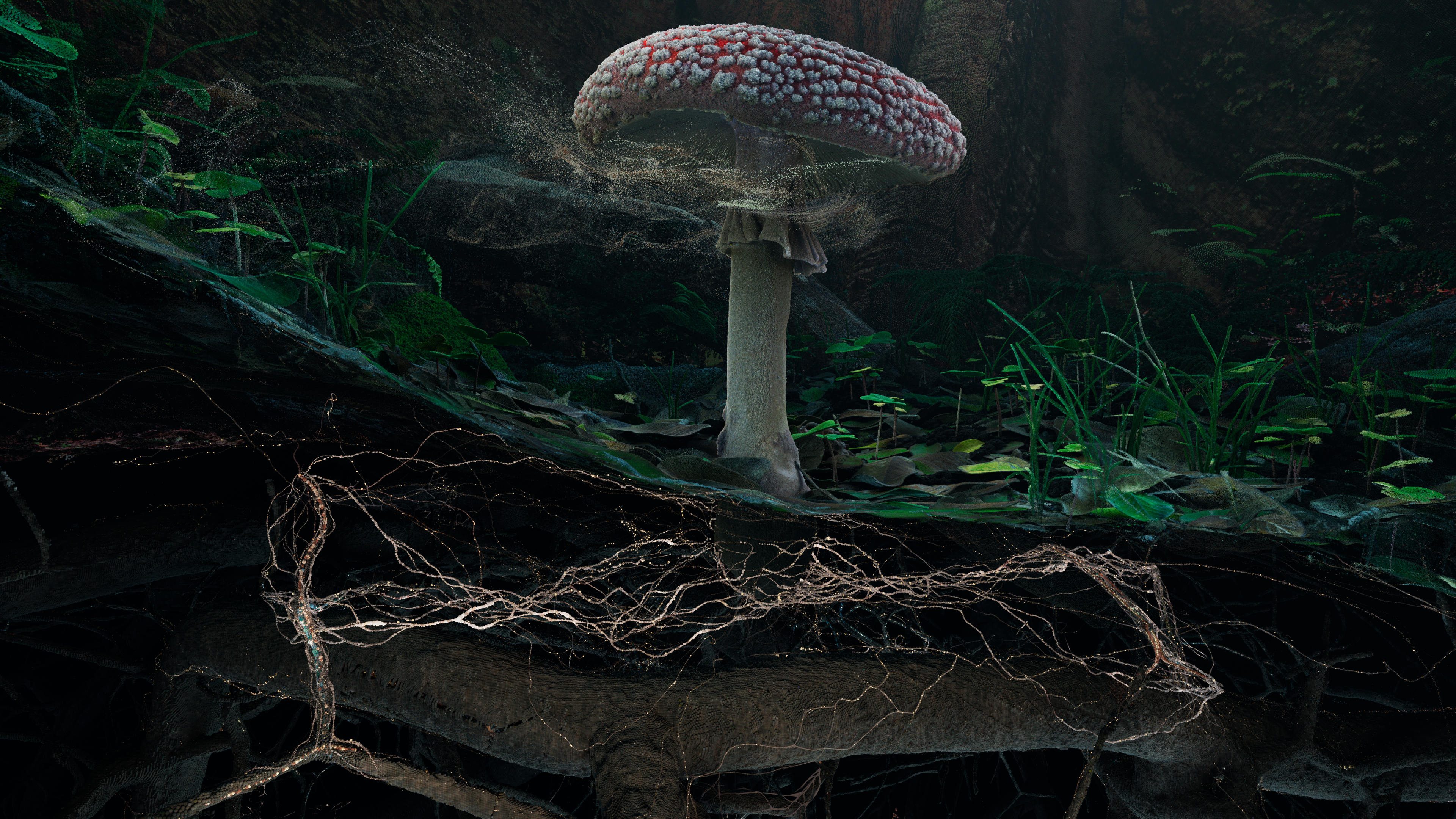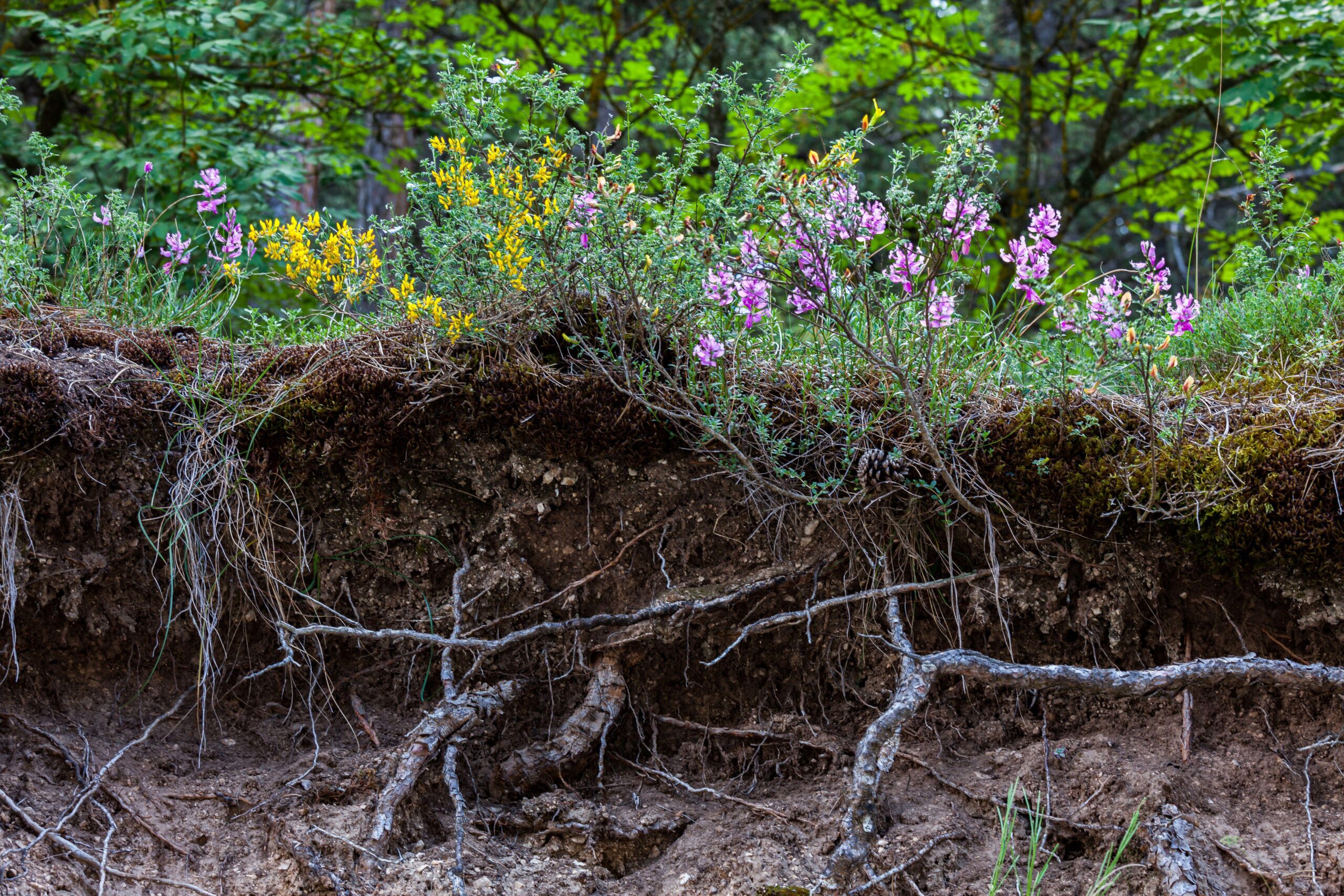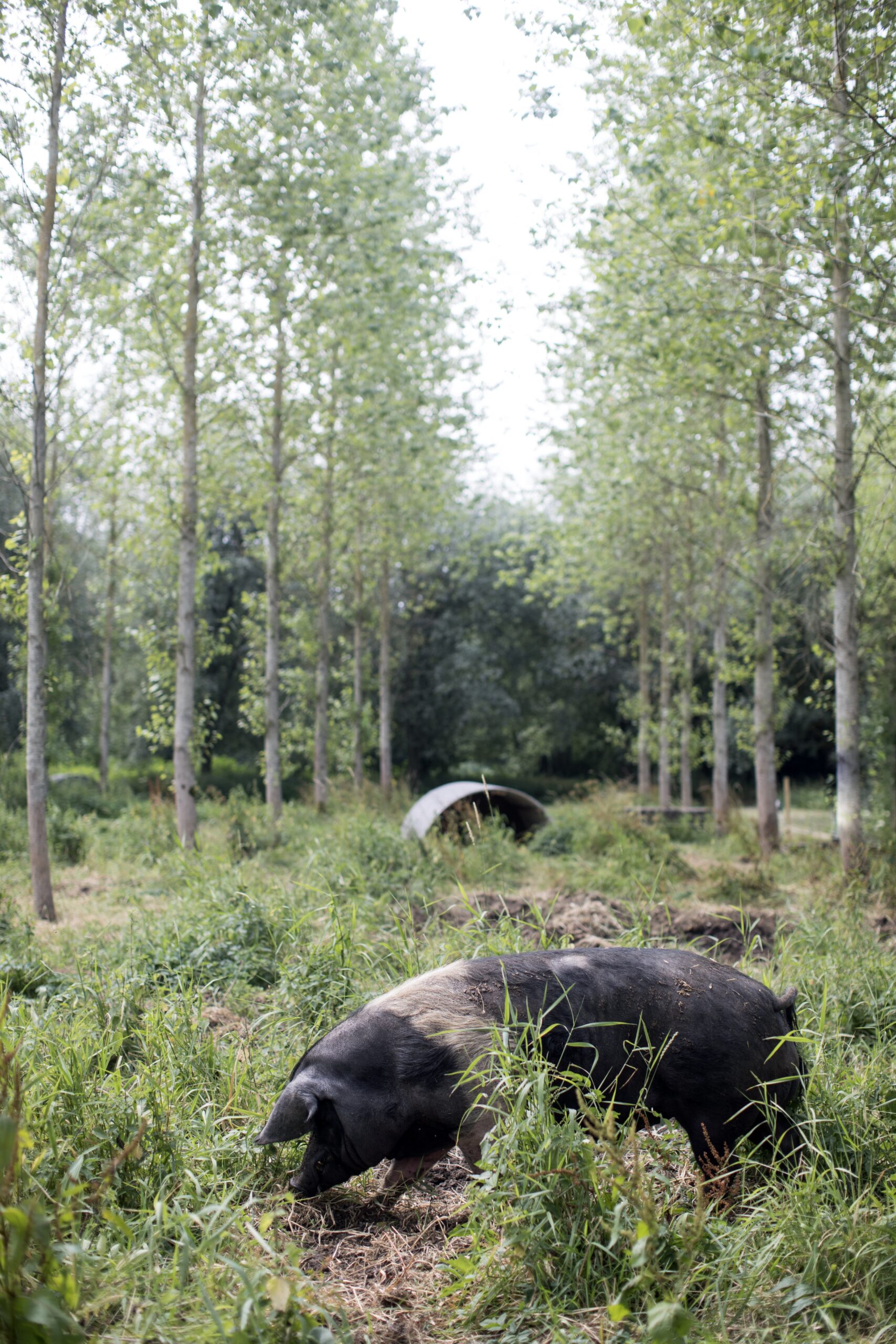'Were the soil a jungle, the worm would be its elephant': Why everything you thought about soil is probably wrong
Did you know that soil contains 59% of all the earth's species? As an exhibition at Somerset House, exploring its vital role in our planet’s future, prepares to open, Sarah Langford argues that it is high time soil become fashionable.

In the mid 1880s, the prevailing view was that soil was disintegrated rock modified by weather. It was inert, unchanging and unchangeable. But, in experiments which lasted 40 years, the naturalist Charles Darwin decided they were wrong. Soil was not static. It was both full of life and ever changing.
Darwin observed that when dead plants were eaten and passed through a worm, they formed a cast, many times nutritionally richer than the ground around it. This formed a layer of fertile humus; a skin that protected the earth. Worms, Darwin concluded, did not merely move soil around. They made it. They were ‘one of few animals which have played so important a part in the history of the world’, not least because the soil they created protected and preserved ‘every object not liable to decay which is dropped on the surface of the land’. Archeologists, he cautioned, ‘ought to be grateful to worms’.

Much of Darwin’s work was ignored in favour of one of his contemporaries, Justus von Liebig, who concluded something else entirely. Discounting soil humus as having any value, he considered soils a storage bin for nutrients, specifically nitrogen, potassium and phosphate. ‘All plants, without exception, exhaust the soil, each of them in its own way, of the conditions for their reproduction,’ he wrote (although anyone with a thriving pot plant may disagree). His ‘Law of the Minimum’ warned that if one nutrient was missing, it would reduce a plant’s ability to take up others. His ‘barrel theory’ offered a simple solution: a nutrient taken off in a crop could simply be added to the soil.
Liebig was thought to have later recanted but, by then, the paradigm had stuck. It would do so for the next century, influenced by a series of world and scientific events. When Britain entered the Second World War, it realised our reliance on food imports left it vulnerable. The legacy of the removal of the Corn Laws, a World War and the Great Depression had left farmland abandoned. The Dig for Victory effort increased the arable area by 50%. In six short years, the country went from importing 70% of its food to making it. Work by American plant breeder Norman Borlaug developed high-yielding wheat varieties. Grown with newly available artificial fertiliser and pesticides, the ‘green revolution’ saw production boom. Four decades after the end of the war, Western Europe’s overproduction had to be stockpiled in concrete silos: 17 million tons of grain, more than anyone or anything could eat. This overproduction continues to this day: we produce enough food globally to feed three billion more people than exist, with up to 40% being lost or wasted.
We are now beginning to understand the true cost of so much plenty. Intensive agriculture, with its tillage and use of artificial fertilisers and chemicals, which deplete rather than feed the soil, have left the UN declaring one-third of the globe’s soils to be degraded. In a world that grows 95% of its food in soil, this degradation undermines our very existence.

For we now know that the soil is alive, containing 59% of all the earth’s species, making it, according to a recent study, ‘the singular most biodiverse habitat’ on earth. A teaspoon of living soil contains more creatures than there are people existing on the planet. Indeed, only 10% of the regionally specific creatures living within it have been identified. Although earthworms are part of it, were the soil a jungle, the worm would be its elephant. They live alongside billions of creatures that spend their lives eating, excreting, dying and reproducing and, in doing so, continually changing the soil’s properties in an ancient, symbiotic relationship with plants that now seems to hold the key to both the health of the soil, the plant and, when we eat it, us.
Plants work with soil so both can thrive. For beneath the ground, a deal is done. Plants exude between 11%–40% of the liquid carbon they make during photosynthesis to feed themselves through their roots. This is exchanged with some of the microbes and bacteria living in the soil in return for the minerals and nutrients, macro and micro, that the plant needs to stay healthy. Plant and microbe are joined together by a vast network of fungi, so that a plant attacked by a pest or fungal disease can dial up exactly the microbe or bacteria it needs. Unbroken, this giant underground telephone network will stretch for miles. This relationship between the amount of life in the soil and the diversity of plants that feed it mean that, if plants are removed, soil can no longer live.
Sign up for the Country Life Newsletter
Exquisite houses, the beauty of Nature, and how to get the most from your life, straight to your inbox.
Much like Rozier’s Complete Course of Agriculture, which, despite Darwin’s work, declared worms ‘pests’ that needed to be eliminated from the soil well into the early 20th century, a lucrative agri-industry has become invested in selling us the nutrients thought to be missing from the soil. The soil in which we produce our food has become a material to which nutrients are added, not an essential part of the growing process. Failing to understand it has come at a cost to us all. In the UK we lose 2.2 million tons of topsoil each year and, despite all the pesticides and fertilisers, we have not eliminated crop disease or pests. Although chemicals may win the battle, Nature wins the war.

But times are changing—and not only within science. For in a world where advertising not argument holds the greatest sway, it was high time soil became fashionable. And, at last, it has. Nearly 100 years after the co-founder of the Soil Association, Lady Eve Balfour, was called a crank for writing The Living Soil, celebrities, chefs and musicians are putting their hands (or, at least, their money) into the earth. Books by regenerative rancher Gabe Brown are bestsellers; Netflix is streaming Kiss The Ground and cinemas Six Inches of Soil. Buses drive through central London urging urbanites to ‘Save Our Soils’, as model Arizona Muse founds a charity, Dirt, supporting biodynamic farming projects around the globe.
All this is set to a backdrop of one of the biggest changes to UK agriculture in generations. Public subsidies for land have been replaced with ‘public money for public good’. The Government’s Sustainable Farming Incentive places restoration of soil at its heart. Farmers can choose from a mix-and-match suite of 23 different ways to not only prevent soils from degrading, but regenerate them.
Along with this new attention comes opportunity. Our soils store more than three times the amount of carbon than is in the atmosphere. Last year, research found that sequestering 1% more carbon in half the world's degraded soils would capture enough to keep the world within 1.5% of global heating. Meanwhile, for anyone finding their house uninsurable after repeated flash flooding, soils may also hold the key. UK soils alone can hold an estimated 130 trillion litres of water, more than all our rivers and lakes combined. Andy Neal at Rothamsted Research says that ‘every 1% increase in soil organic carbon equates to a water-holding capacity increase of 354,000 litres a hectare to a depth of 30cm’—more than five swimming pools’ worth of rain in only one hectare (2½ acres). Restore your soils and rain goes into the field, not our villages or rivers.
Sarah Langford is the author of ‘Rooted: How Regenerative Farming Can Change The World’; 'Soil; The World At Our Feet' at Somerset House is on until April 13. Click here for more information and to book.

